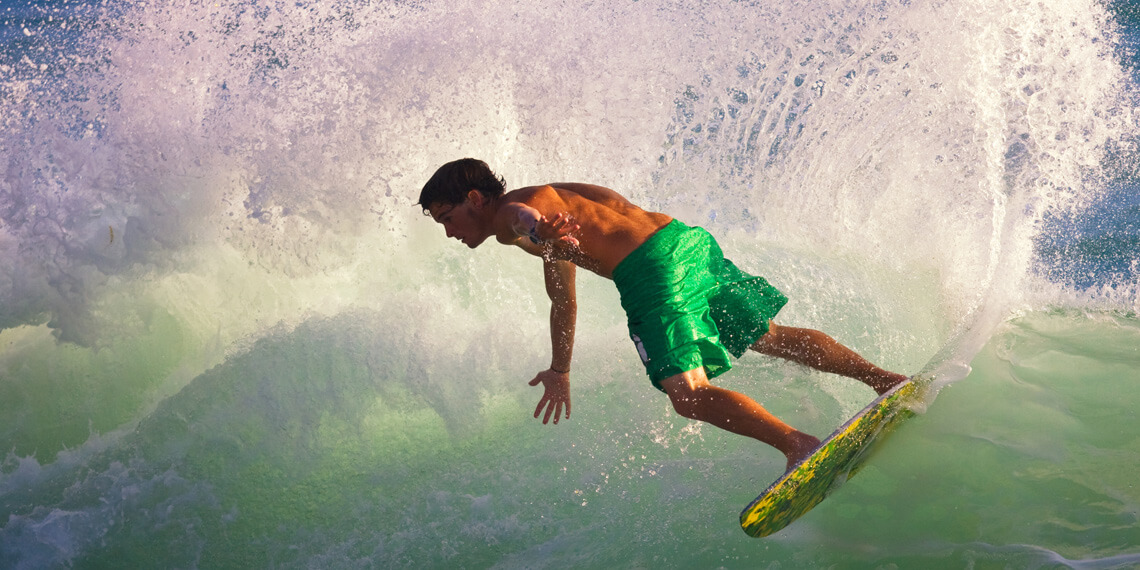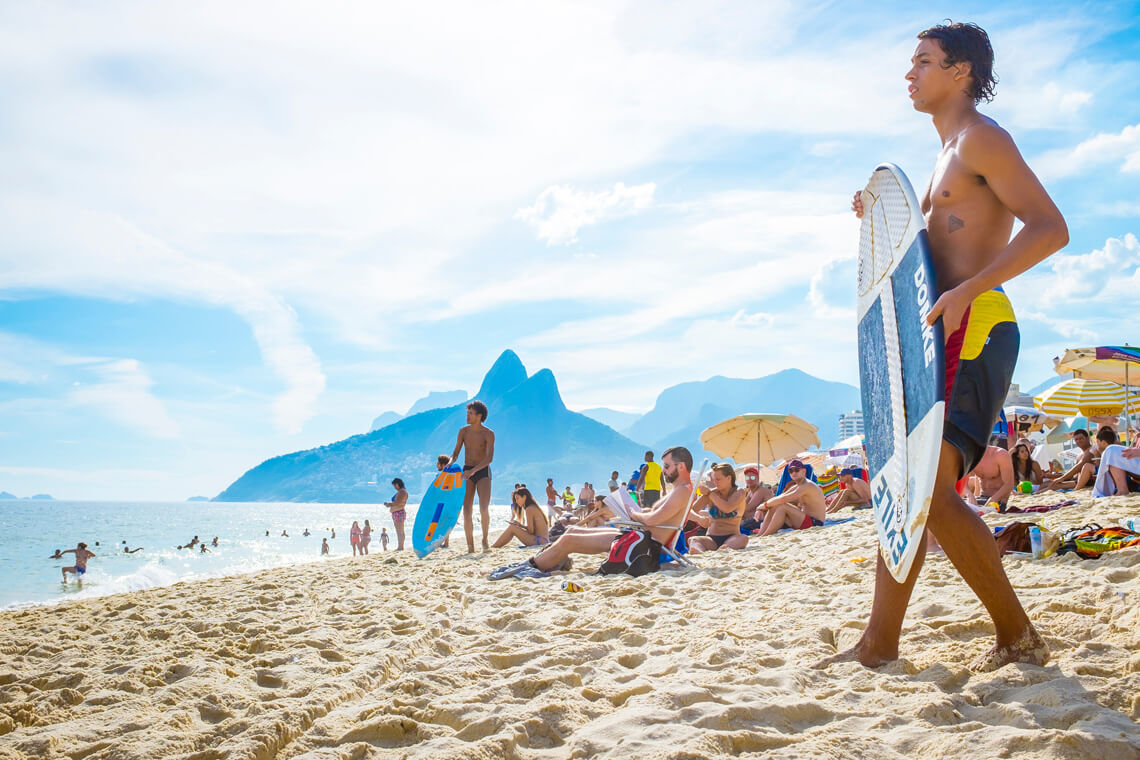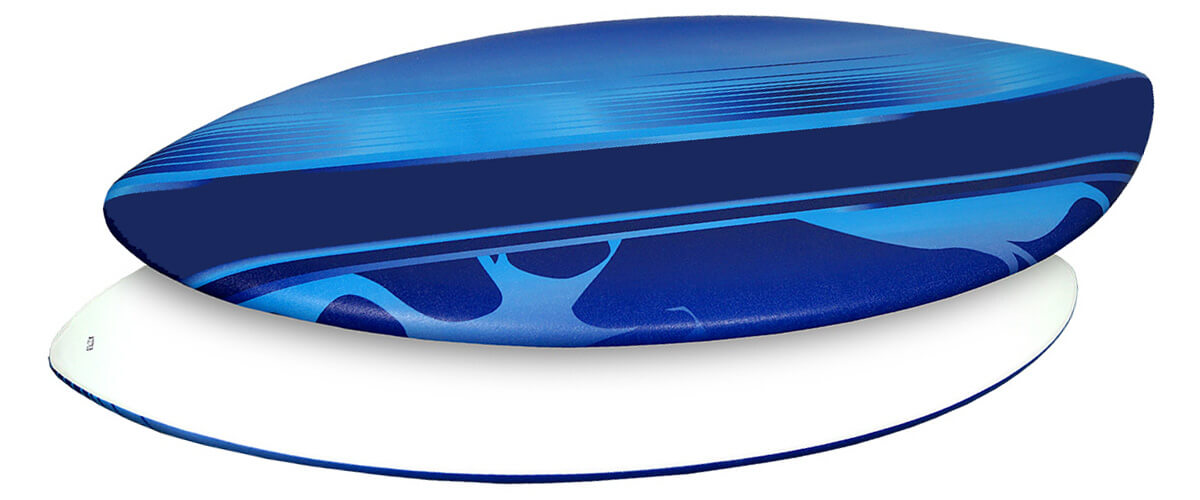How should you choose and buy a skimboard? Do you plan to ride shore break waves or just glide across a wet surface?
First of all, you have to choose the board that fits your weight and experience level. In the end, it's all about the amount of speed you can carry into the water or ground.
If you're a beginner rider, start riding your skimboard in a wet, flatland surface. Obstacles and shore breaks should only come later.
Remember that skimboarding is a thrilling sport, but you should always follow basic safety procedures to protect yourself and others.
To convert kilograms (kg) to pounds (lb), note that 1 kilogram equals 2.2 pounds. To convert meters (m) to feet (ft), note that 1 meter equals 3.3 feet.
Take a look at the skimboard size chart:
| Skimboarder Weight (lb) | Skimboard Model (size) | Skimboard Dimensions (inches) |
|---|---|---|
| < 80 | XXS | 45.00'' x 19.00'' |
| 80-100 | XS | 48.00'' x 19.25'' |
| 100-140 | S | 51.00'' x 19.75'' |
| 120-160 | M | 52.00'' x 20.00'' |
| 140-180 | ML | 52.25'' x 20.25'' |
| 160-200 | L | 52.50'' x 20.50'' |
| 180-220 | XL | 53.00'' x 20.75'' |
| 200-240 | XXL | 54.00'' x 21.50'' |
How to Buy the Right skimboard?
Size
How do you choose a skimboard? Is there an ideal board for my weight?
As a rule of thumb, a large skimboard - in height and width - will be fast, but will not carve quickly if you need, for example, to attack a falling wave lip.
On the other side of the spectrum, a small board tends to be "nervous" yet slower. In other words, it will respond quickly to subtle body adjustments, but will not be as fast as a big board.
Rule of thumb number two: get a skimboard that stands at about mid-chest height.
Skimboards range between 45.00'' and 57.00'' in height, and between 17.75'' and 23.00'' in width, depending on the rider's physical characteristics, level of experience, and type of ride (waves or flat waters/surfaces).

Thickness, Tail and Shapes
Thickness plays a crucial role in the skimboard's behavior.
Thick skimboards will float and glide better but won't turn and carve so well because they lack responsiveness.
Thin models are harder to control at full speed, but they will allow you to perform maneuvers easily and effortlessly.
Boards with too much rocker are slower and can easily be picked up by medium-to-strong winds.
The most common tail type found in skimboards is the pintail because it will add extra stability to its overall performance.
Skimboard manufacturers tend to produce different shapes, too. There's not a rule of thumb for skimboard designs.
Always remember that the sport has two disciplines: wave skimboarding and flatland skimboarding.
Nevertheless, a wider template is better for flatland and speed, while large tails and noses are designed to spin fast and perform well in obstacles and small waves.
There are also four basic rocker types: continuous, hybrid, three-stage, and five-stage.
Because skimming brands develop their own shapes, it's important to check their own skimboard size charts.
The most popular skimboard manufacturers are Victoria Skimboards, Zap Skimboards, Exile Skimboards, DB Skimboards, and Wave Zone Skimboards.
In the end, if you want to play it conservatively, the wise recommendation is to size up.

Types of Skimboards
There are several types of skimboard cores. They can be made of wood, carbon fiber, Kevlar, fiberglass/foam, and graphite.
For their first board, beginners should buy a wood or graphite plank. They're inexpensive and will help first-time riders get used to the basic skimming moves and techniques
Professional athletes and flatland specialists tend to ride carbon fiber and wood-based skimboards, respectively.
Inland skimboarders typically use wood planks because they're heavier and highly resistant.
Fiberglass/foam boards could be an all-around option for those who enjoy riding both waves and flat inland surfaces.
They have higher floatation and are widely used by wave riders.
